An 89-year-old woman presented to the ED at 5:30am with left hip pain after a fall.
Workup revealed a left intertrochanteric hip fracture.
The on-call orthopedist was Dr. L, who had completed fellowships in hand surgery and sports medicine.
The patient was admitted to the hospital.
An IM-trained hospitalist was consulted for risk stratification, and determined that she was at low cardiac risk.
The patient was taken to the OR that afternoon.
As he was placing the guidewire, Dr. L suddenly encountered excessive bleeding.
He had difficulty controlling the bleeding but was able to continue.
As he placed the intramedullary nail, he again encountered excessive bleeding.
The patient became hypotensive.
A vascular surgery consult was requested.
Dr. L packed the area and completed the nail placement.
The vascular surgeon (Dr. S) subsequently arrived, and located bleeding from the deep femoral artery.
However, the patient was already hemodynamically unstable and continued to decline.
She went into cardiac arrest.
Despite prolonged attempts at resuscitation, she was declared dead.
Join thousands of doctors and attorneys on the email list.
The patient’s family filed a lawsuit against Dr. L and the hospital.
Neither the vascular surgeon nor the hospitalist were named as defendants.
The plaintiffs hired an orthopedic surgery expert witness (Dr. B):
The plaintiff’s attorney requested the patient’s medical records.
Documents revealed that 9 images were taken with a C-arm during the operation, but only 2 images were saved to PACS.
The plaintiff made repeated demands to produce the other 7 images, but the images were not longer saved on the C-arm.
The defense hired multiple experts.
Their orthopedic expert suggested that the arterial injury occurred from bone fragments as a natural consequence of the fracture, not from improper placement of the guidewire.
A vascular surgeon also wrote an opinion for the defense:
The plaintiff offered to settle the case for $900,000.
All parties reached a confidential settlement and the lawsuit was withdrawn.
MedMalReviewer Analysis:
There does not appear to be any way to definitively prove when the vascular injury happened. The plaintiff seems to have a much stronger case in regards to criticizing the response to bleeding and hemodynamic instability. The fact that the plaintiffs did not sue the vascular surgeon, anesthesiologist, or hospitalist suggests that they proceeded with at least some degree of thoughtfulness, rather than the shotgun approach of naming every doctor in the vicinity.
I found it interesting that the surgeon had done a hand surgery fellowship and was still covering trauma call at this hospital. It seems that subspecialization is the predominant trend, but feedback from several orthopedic surgeons suggests that this is fairly common at many hospitals.
Geriatric patients are particularly susceptible to hemorrhagic shock and do not tolerate hemodynamic insult very well. This lady was particularly vulnerable due to being on Plavix. There was no mention of the resuscitation provided by the anesthesiologist. I wonder if the plaintiff’s attorney had an expert review the case from this perspective or simply chose to focus on the primary surgeon.
Here are some previous orthopedic cases:
Here are 2 cases that involve medical management before and after orthopedic surgeries:





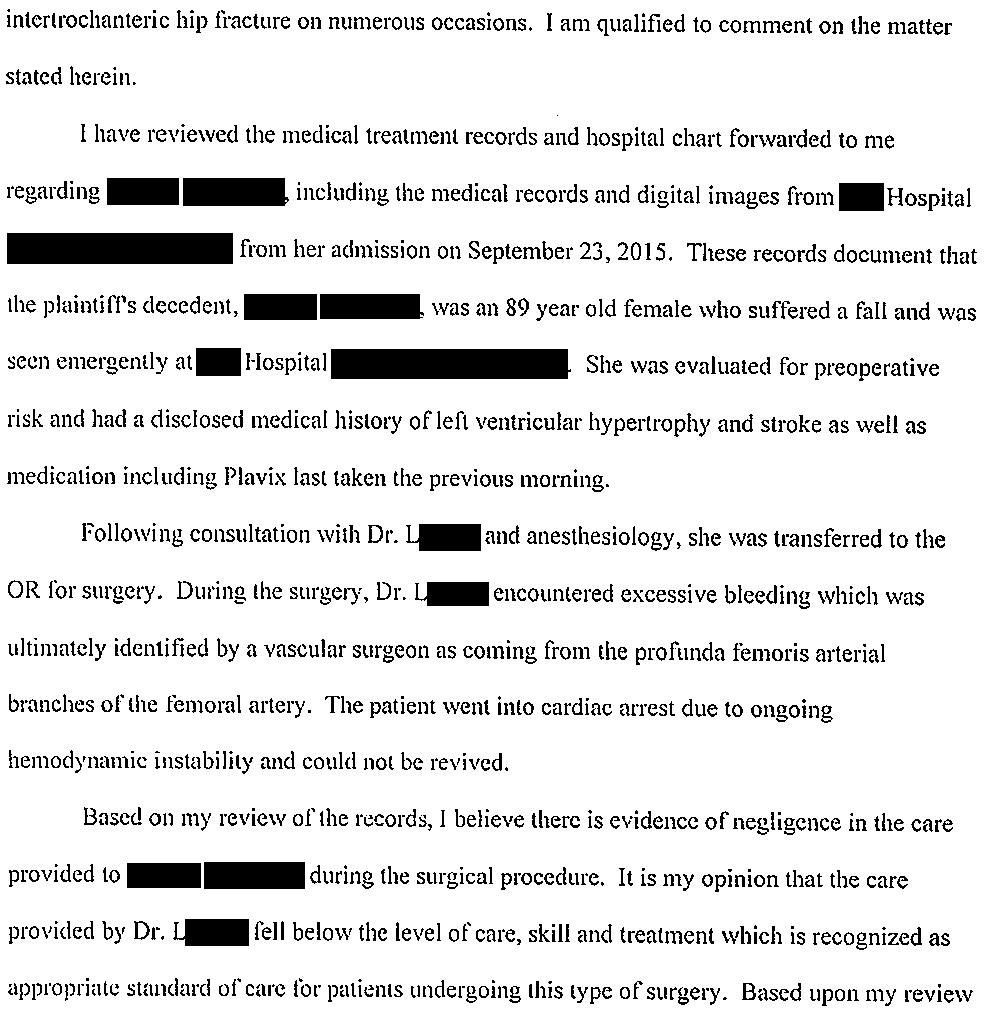
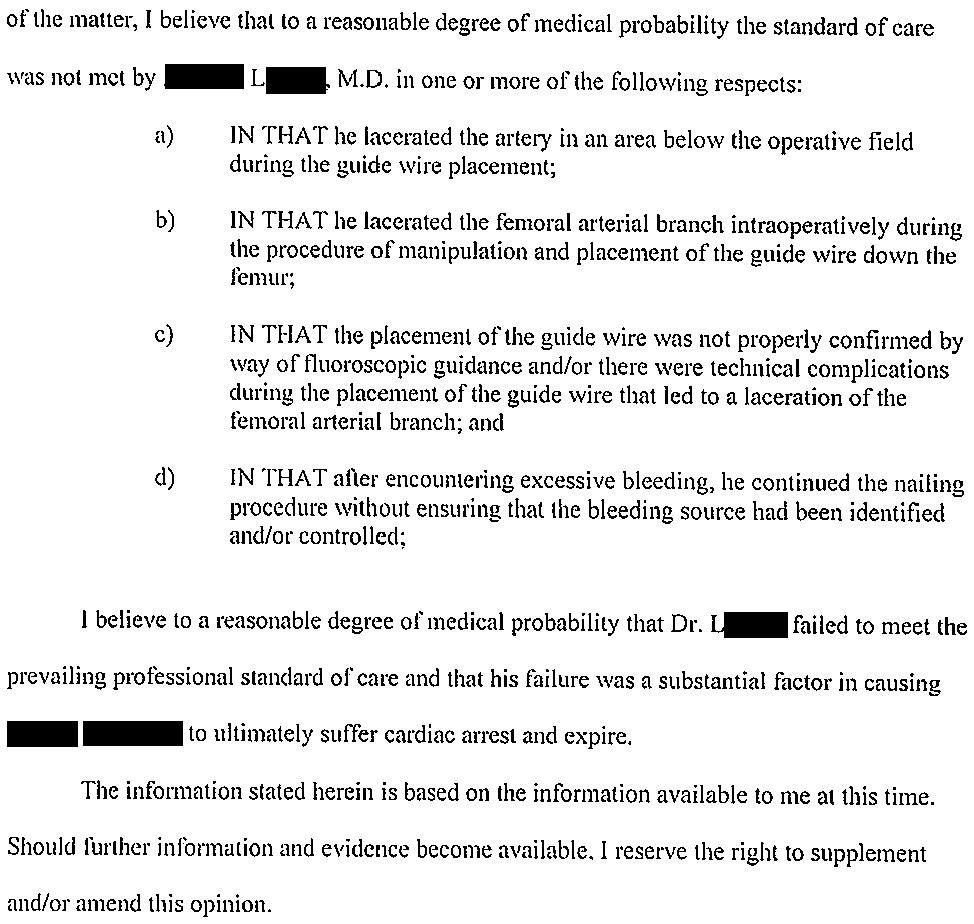


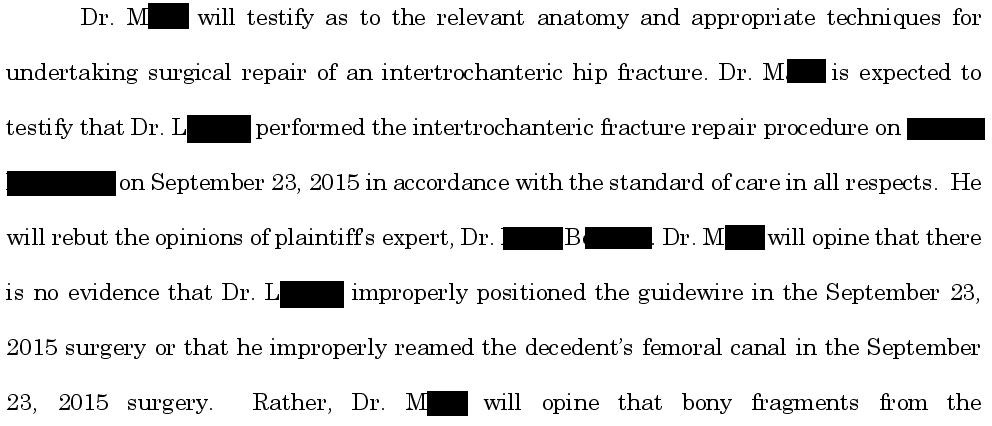
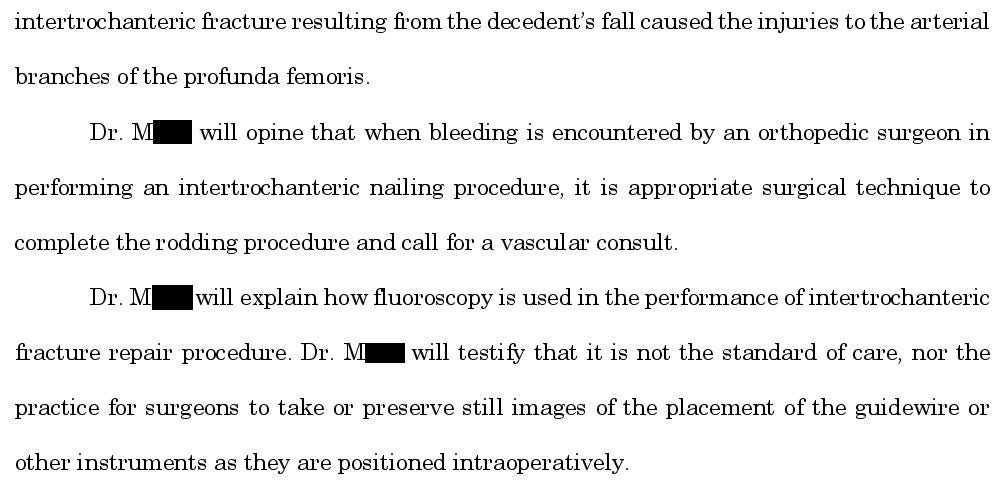



![Suicide After Hip Replacement [Content Warning]](https://substackcdn.com/image/fetch/$s_!SeCH!,w_140,h_140,c_fill,f_auto,q_auto:good,fl_progressive:steep,g_auto/https%3A%2F%2Fbucketeer-e05bbc84-baa3-437e-9518-adb32be77984.s3.amazonaws.com%2Fpublic%2Fimages%2Fdcdb0e26-aa24-4402-865b-6d40015bf772_943x646.jpeg)

![Hip Replacement [$1350/hr Expert Witness]](https://substackcdn.com/image/fetch/$s_!EFjg!,w_140,h_140,c_fill,f_auto,q_auto:good,fl_progressive:steep,g_auto/https%3A%2F%2Fbucketeer-e05bbc84-baa3-437e-9518-adb32be77984.s3.amazonaws.com%2Fpublic%2Fimages%2Fd5511d1c-bf8f-4e4c-9eee-1addd850a680_894x732.jpeg)
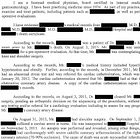
![Hip Fracture Admission Leads to Vomiting and Aspiration [Hospitalist Consult]](https://substackcdn.com/image/fetch/$s_!Jg4S!,w_140,h_140,c_fill,f_auto,q_auto:good,fl_progressive:steep,g_auto/https%3A%2F%2Fsubstack-post-media.s3.amazonaws.com%2Fpublic%2Fimages%2Fd36d398b-52d4-4511-940c-7cdb7dd28c40_1051x1142.jpeg)
Unfortunately, an 89-year-old with a hip fracture has an outlook in the coming months which is mediocre at best, even under good circumstances. I don't see any actual evidence of negligence on behalf of the surgeon. Even if we take for granted that the surgeon caused the bleed, it's not clear that it is negligent.
Most orthopedic surgeons take call and take care of hip fractures on weekends despite any additional fellowships training they have. Hip fractures are really considered “bread and butter” in that there are so many that occur that we all share the load in taking care of them. Looking at the final fleuro shots the nail looks well positioned. Seems like a nightmare for everyone but I’m not convinced there was any mal practice here. In the same situation I would continue to fix the fracture as well while waiting for vascular. Otherwise you’re just standing there doing nothing or making things worse. This case takes all of 30 minutes when it’s going well.
With regard to the fleuro images not being saved - that’s on the radiology tech. I have them save everything on every case but that’s not standard. Many times the final A/P and lateral are all that get saved.